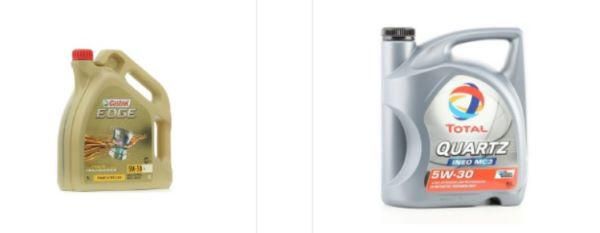In case you missed it see what’s in this section
Let's Talk
What types and kinds of engine oils are there? How often should you change the oil in the car?
Motor oils, regardless of their composition and quality, are subjected to the same stresses because the heat of the engine is the same. Moreover, besides temperature, oil is affected by other factors such as oxidation, oxygen, exhaust gasses and more. To understand which oil to choose for your car, it is worth learning a little more about it.

Engine oil image taken from autodoc.co.uk
How to understand the markings on motor oil bottles
The modern world is rich in both excellent honest professionals and those who seek to enrich themselves at the expense of the ignorance of others. That's why it pays to understand what it says on the oil bottle.
SAE oils are marked with these symbols: SAE 10W-40, SAE 15W-40, SAE 30, SAE 0W-40, SAE 10W, SAE 20W-50 and so on. The index before the letter W shows the winter rating. The lower the value, the longer the oil will not freeze. The minimum value in this case may be 0. If the number is given without the W sign, the summer rating can also be understood here, i.e. how thick the oil becomes at high outdoor temperatures. The higher the number, the more resistant the oil is to heat.
Important: it's worth memorizing the number -35 and adding the number before the letter W to it. For instance: 10W-40: K -35 + 10, you get -25. This signifies that at this temperature the oil will not yet freeze.
The classification of oils by API is as follows. For example, the values of API SJ/CF, API SF/CC, API CD/SG, API CE, API CE/CF-4, API SJ/CF-4 EC 1 should be read as follows:
- S - oil for gasoline motors;
- EC - for energy efficient;
- C - for diesel engines.
The letters next to each other indicate the quality level for the corresponding car type: for gasoline motors from A to J, for diesel motors from A to F. The later a letter in the alphabet, the higher the quality of the oil. The symbol after the letters API CE/CF-4 means that the oil is designed for 2-stroke or 4-stroke engines.
Note. Of course, you can't do without multi-purpose oils on the market, they are available too. Their names are API CD/SG. You can, of course, figure out which is which. CD/SG is more for a diesel engine, SG/CD for a gasoline engine.
You can choose an oil by ACEA classification, knowing that:
- "A/B" is for gasoline and diesel cars;
- "C" - for gasoline and diesel motors of cars with catalytic converters and particulate filters;
- "E" we have only for diesel units of trucks and special vehicles.
Each class has its own categories. These are A1/B1, A3/B3, A3/B4, A5/B5 or C1, C2 and C3, which indicate different characteristics. Category A3/B4 oil, for instance, is used in supercharged petrol motors.
How frequently do you need to replace the motor oil?
Makers suggest changing the oil every 10,000 to 15,000 km. It should be changed at least one time in a year, despite the distance traveled by the car, even if the car has not been driven at all. Drivers are assisted in this by the car's owner's manual, which indicates the type of oil and the desired frequency of its replacement. The intervals for changing the oil in the engine are directly related to the amount of use of the vehicle by the driver.
To know when it is time to replace the oil in the car, you need to watch out for certain signs and changes in the car's performance. If you don't change the oil within 2 years, it will begin to badly dissipate heat and the engine will overheat, the level of metal protection against corrosion will significantly decrease, and combustion products will accumulate in the engine, which will eventually lead to its failure and the need for major repairs.
Classification of Motor Oils
Motor oils have been produced for many years, and the primacy belongs to such manufacturers:
- API - from the U.S. Petroleum Institute;
- SAE, from the U.S. Association of Automotive Engineers;
- ACEA - from the Association of European Automobile Manufacturers.
For some car owners, this information may be enough to choose an oil. For those who want to know more, more information is provided below. Oils from the companies listed above can also be divided into types:
- SAE, oils. which are more resistant to external thermal surges;
- API, the higher quality of the oil itself, the emphasis on the entire group of properties.
Regarding the chemical composition of oils, we can distinguish four types:
- mineral oils;
- hydrocracking;
- semisynthetic;
- synthetic types of oil.
With the right knowledge about such an important nuance as automotive oils, you will be able to operate your car much longer.
Sources of information for the article:
https://www.howitworksdaily.com/what-is-engine-oil/
https://www.autodoc.co.uk/info/what-to-know-about-changing-the-engine-oil-and-oil-filters
Weather in Swindon
Listings



















